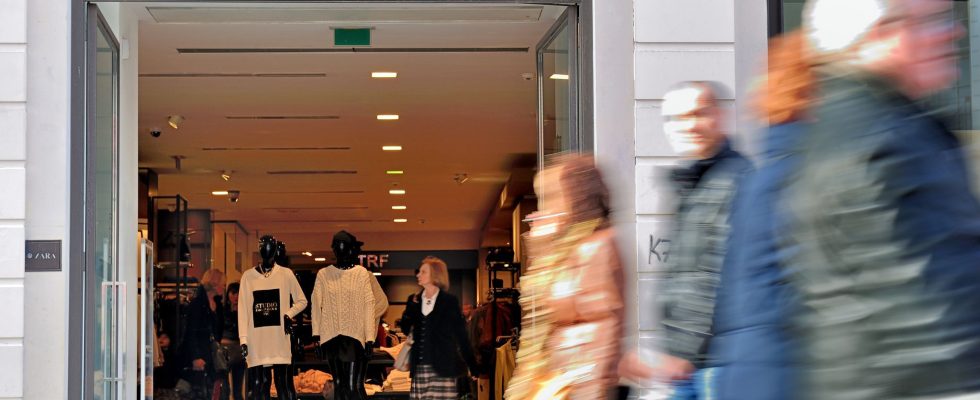Zara saw things big. On April 21, the Spanish brand inaugurated a new store with great fanfare on the very popular Avenue des Champs-Elysées, just a few dozen meters from the three-storey point of sale that it had already had since 2012. And not any shop: marble floor, high ceilings, elaborate lighting, long stone columns, latest-generation checkouts, woodwork of all kinds… With its 2,700 square meters of surface area spread over a single level on one level on the most famous commercial artery in the world, this flagship (“flagship”) should serve as a showcase for a brand that has established itself as a benchmark in the French ready-to-wear sector in recent years.
An exception or almost in a landscape decimated by the myriad of legal redress that followed the release of the Covid-19. Kookaï, André, Camaïeu and recently Don’t Call Me Jennyfer… There are countless French signs on the floor. “Today there is a premium for the strongest. The Inditex group – owner of Zara – has the possibility of satisfying all market segments: low prices, mid-range, with a very significant international power” , explains Gildas Minvielle, director of the Economic Observatory of the French Fashion Institute.
A reworked network of stores
A strike force illustrated by its network in France and abroad: Zara has some 1,880 stores worldwide, including more than a hundred in France. But since 2020, the brand has made a change of strategy: to small stores, it now prefers larger points of sale, most often located in shopping centers. “Their network remains today the number one showcase for the brand with a ‘standardised’ customer experience from one country to another”, explains Céline Choain, senior Partner at Kea & Partners. A profitable bet: the shops are almost never empty. In the first quarter of 2023, the textile giant, based in La Coruña, achieved a net profit of 1.2 billion euros globally, up 54% compared to the same period last year.
A real feat, putting its Swedish rival H & M in the background, which is struggling to keep up with the frantic pace imposed by the Spanish locomotive. “International competition is very strong with Inditex, H & M and Primark. Players like Zara have succeeded in moving upmarket, offering better cut products, which compete with more expensive pieces”, analyzes a government adviser familiar with these questions. The opening of the new Parisian boutique reflects this desire to step up a notch in quality and in terms of sales. “The offer is quite clear: clothes worked, with style, which follow trends”, describes Clotilde Chenevoy, editor-in-chief of the media Republic Retail.
A successful digital transition
Unlike several of its competitors, the brand has also been able to make a successful transition to digital, while maintaining an omnichannel strategy. “The digitization of Zara is undeniable today. When they decided to invest in the subject, they very quickly accelerated, with operational excellence (offer, customer journey, logistics, etc.) which defines them”, considers Céline Choain .
To meet an ever stronger and more demanding demand, the Spanish company has been able to rely on an extremely well organized and structured distribution network, with an ever finer analysis of customer desires. And in the world of ready-to-wear, data management is essential today. “Zara has always been very good at managing its inventory. They use data a lot to identify the best-selling products. If it works, they restock, if not, they stop the collection,” notes Clotilde Chenevoy. And to be agile, the brand is supplied in Morocco, Spain or Portugal. “This allows them to be ultra-responsive. This is what penalizes the other brands a lot”.
Shein’s shadow
Considered from the outset as a fast fashion brand, Zara has managed to shed this image little by little. The appearance of the Chinese Shein is no stranger to this. “The arrival of these new, extremely competitive players almost led to Zara and H&M being elevated to the rank of premium brands, when they were the epitome of fashion at low prices”, underlines Serge Carreira, expert in the sector and lecturer at Sciences Po.
Its brand image has remained intact with consumers. “She has succeeded in establishing herself as a reference among consumers in a transgenerational way, with a constant promise since her creation: to make catwalk fashion accessible on the market, directly inspired by the creators of the moment”, points out Céline Choain. In any case, nothing seems to be able to get in the way of the Spanish giant. Not even its competitor Shein regularly accused of copying Zara.
